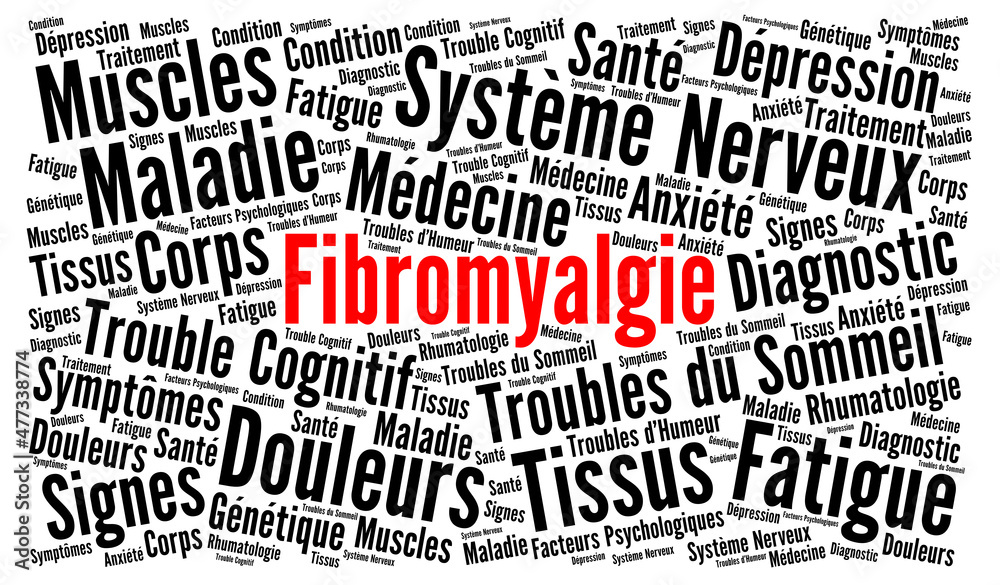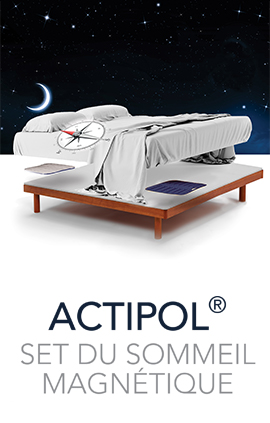Fibromyalgia, also known as diffuse idiopathic polyalgic syndrome, fibrositis or fibromyositis syndrome, fibrositis or fibromyositis, is a disease recognized by the World Health Organization since 1992. Its nature and existence are still existence are still the subject of many questions in the medical world. medical world.
It is estimated that approximately 2% of the European population population is affected by this disease, but this figure is not very precise because but this figure is not very precise because the diagnosis remains difficult to establish, the symptoms being variable from one patient to another.

What is fibromyalgia?
Fibromyalgia is a disease that combines permanent muscle or joint pain, chronic fatigue, sleep disorders, depressive symptoms and anxiety disorders. The sufferer complains of having pain everywhere without interruption for months. Usually painless stimuli can cause pain and normally bearable pain can be experienced as intense. In more than 80% of cases, fibromyalgia affects women between the ages of 30 and 55. It appears more frequently around the menopause.
In some cases, people also complain of headaches, stomach aches, jaw pain, constant urination, painful periods, or tingling in the fingers or feet.
When fibromyalgia is suspected, the doctor (most often a general practitioner, rheumatologist or psychiatrist) looks for a set of symptoms that must be present to confirm the diagnosis
- a diffuse pain spread over the whole body (on the right and left sides, above and below the hips) and lasting for more than three months ;
- pain in the spine;
- pain on pressure at eighteen well-defined points on the body (neck, shoulders, back, hips, kidney pit, elbow pit, etc.). In order to make a diagnosis of fibromyalgia, eleven or more of these eighteen points must be abnormally sensitive to finger pressure.
The physician may prescribe additional tests to rule out other diseases with symptoms similar to those of fibromyalgia: osteoarthritis, hypothyroidism, rheumatoid arthritis, ankylosing spondylitis, systemic lupus erythematosus, polymyositis, Gougerot-Sjögren syndrome, etc. In patients with fibromyalgia, complementary examinations do not reveal any abnormality.
In people suspected of suffering from fibromyalgia, there is a specialized questionnaire, the FIRST questionnaire, which allows an evaluation of pain and guides the diagnosis.
What are the causes of fibromyalgia?
Currently, the causes of fibromyalgia are not really known. Several hypotheses have been put forward, including the possibility that sleep disorders prior to the onset of the pain syndrome could be the cause. The researchers also suggest that a defect in adaptation to stress by hypervigilance of the nervous system could be the cause. It would seem that Fibromyalgia can appear following a psychological trauma (accident, break-up, death), childbirth, overwork or a severe infection (particularly viral).
Signs of family susceptibility to this disease have also been observed, but need to be confirmed.
Finally, certain factors that can maintain fibromyalgia have been identified: stress, anxiety, loss of muscle mass (due to inactivity caused by pain).
Can fibromyalgia be prevented?
Since the causes of the disease are not clearly identified, it is difficult to prevent fibromyalgia. Nevertheless, it is recommended to pay attention to one's lifestyle and to limit risky situations, especially to prevent viral diseases.
What are the treatments for fibromyalgia?
There are no specific drug treatments for fibromyalgia. The medications that are sometimes prescribed are intended to relieve the symptoms without acting on the cause of the disease, which remains unknown.
This is why non-medicinal treatments are preferred, particularly physical exercise.
Adapted physical activity (APA) is the best way to reduce the symptoms of fibromyalgia. Indeed, regular physical activity contributes to a significant reduction in pain and an improvement in quality of life and morale through the secretion of endorphins that it provides.
Many sports activities can be adapted to people suffering from fibromyalgia: for example, swimming, Nordic walking, yoga, taichi chuan, qi qong.
In the context of fibromyalgia, the attending physician can now prescribe APA, specifying the objectives sought (reduction of the pain syndrome, muscular strengthening, fight against stress, etc.) and the contraindications specific to the patient. In the clubs that offer these disciplines, educators trained in the practice of health sports are responsible for defining fitness and training protocols adapted to each particular case. The costs incurred, which are often modest, are sometimes covered by supplementary insurance ("mutuelles") or by the town halls/departments.
Patients who use these adapted activities report physical benefits (e.g. autonomy and endurance), but also psychosocial benefits (fight against isolation, better self-image).
In addition, treatment with alternative medicines has shown a beneficial effect on certain symptoms: acupuncture, spa treatments, yoga, tai chi, qi gong, as well as behavioral and cognitive psychotherapies.
Magnetic therapy is a natural therapy that can also help greatly with its positive effects on painful symptoms and sleep disorders. Recognized for their analgesic effects, therapeutic magnets can be used freely on any part of the body. For optimal comfort, they can also be integrated into orthotic devices (knee brace, elbow brace, ankle brace, shoulder brace, etc.) which, thanks to a light restraint, leave each person free to move. Other magnetic products can also improve sleep quality, such as Auris' iconic product: Actipol®, which has been the subject of a clinical study.
Thus, several natural and non-medicinal methods are available and can be adapted to each patient according to the type of symptoms.

